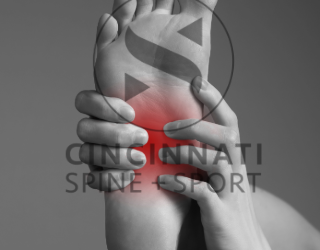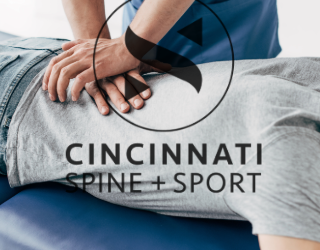The latissimus dorsi, commonly referred to as the “lats,” is a large, powerful muscle that plays a vital role in the movement and stability of the shoulder. However, increased tension or tightness in the lats can significantly affect shoulder function, leading to decreased range of motion and potential discomfort. At Cincinnati Spine and Sport, we recognize the importance of addressing muscle tension to maintain optimal shoulder health.
Understanding the Latissimus Dorsi
The latissimus dorsi is a broad, flat muscle that extends from the lower back to the upper arm. It originates from the lower spine (thoracic and lumbar vertebrae), the sacrum, the iliac crest (part of the pelvis), and the lower ribs. It inserts into the intertubercular groove of the humerus (upper arm bone). The primary functions of the latissimus dorsi include:
- Extension: Moving the arm backward
- Adduction: Bringing the arm toward the body
- Internal Rotation: Rotating the arm inward
- Stabilization: Providing stability to the shoulder during various movements
How Increased Muscle Tension in the Lats Affects Shoulder Motion
- Limited Flexion:
- Restriction in Overhead Movements: Tight lats can restrict shoulder flexion, making it difficult to raise the arm overhead. This can impact activities such as reaching for objects on high shelves, performing overhead sports movements, or lifting weights.
- Compromised Abduction:
- Difficulty with Side Movements: The latissimus dorsi also affects shoulder abduction (raising the arm to the side). Increased tension can limit this motion, leading to difficulty in lateral movements and exercises.
- Altered Scapular Mechanics:
- Scapular Dyskinesis: Tight lats can contribute to improper movement of the scapula (shoulder blade), a condition known as scapular dyskinesis. This can result in abnormal shoulder mechanics, increasing the risk of injury and discomfort.
- Impingement Syndrome:
- Subacromial Impingement: Tight lats can contribute to shoulder impingement, where the tendons of the rotator cuff are compressed under the acromion (part of the shoulder blade). This can cause pain and inflammation, further limiting shoulder movement.
- Poor Posture:
- Rounded Shoulders: Increased tension in the lats can pull the shoulders downward and forward, contributing to a rounded shoulder posture. This posture can exacerbate shoulder tightness and limit range of motion.
Addressing Latissimus Dorsi Tension
Effective management of latissimus dorsi tension involves a combination of stretching, strengthening, and manual therapy techniques. Here are some strategies we recommend at Cincinnati Spine and Sport:
- Stretching Exercises:
- Lat Stretch: Reach both arms overhead and grasp one wrist with the opposite hand. Gently pull to the side to stretch the lats. Hold for 20-30 seconds and switch sides.
- Child’s Pose: From a kneeling position, sit back on your heels, extend your arms forward, and lower your chest to the floor. This yoga pose helps to stretch the lats and relax the back muscles.
- Strengthening Exercises:
- Scapular Stability: Strengthening the muscles around the scapula, such as the rhomboids and lower trapezius, can improve shoulder mechanics and reduce tension in the lats.
- Rotator Cuff Exercises: Incorporating exercises like external rotations and shoulder presses can help balance shoulder muscle activity.
- Manual Therapy:
- Active Release Technique (ART): This hands-on technique targets tight muscles and adhesions, improving flexibility and reducing tension.
- Dry Needling: Inserting fine needles into trigger points within the latissimus dorsi can help release muscle tightness and
improve range of motion.
- Postural Correction:
- Posture Exercises: Engaging in exercises that promote good posture, such as scapular retractions and chest openers, can counteract the effects of tight lats and improve shoulder alignment.
- Functional Movement Training:
- Incorporate functional movements that simulate daily activities and sports-specific actions to enhance shoulder mobility and reduce latissimus dorsi tension.
Conclusion
The latissimus dorsi plays a crucial role in shoulder movement and stability, but increased tension in this muscle can lead to a decreased range of motion and potential shoulder issues. At Cincinnati Spine and Sport, we emphasize the importance of maintaining flexible and functional lats to ensure optimal shoulder health.
By incorporating stretching, strengthening, manual therapy, postural correction, and functional movement training, you can effectively manage latissimus dorsi tension and improve your shoulder mobility. If you are experiencing shoulder pain or limited range of motion, schedule an appointment with us today to start your journey toward better shoulder health and overall well-being.
Understanding the impact of latissimus dorsi tension on shoulder function is key to maintaining an active, pain-free lifestyle. Our team at Cincinnati Spine and Sport is here to support you with personalized care and advanced treatment techniques tailored to your needs.





